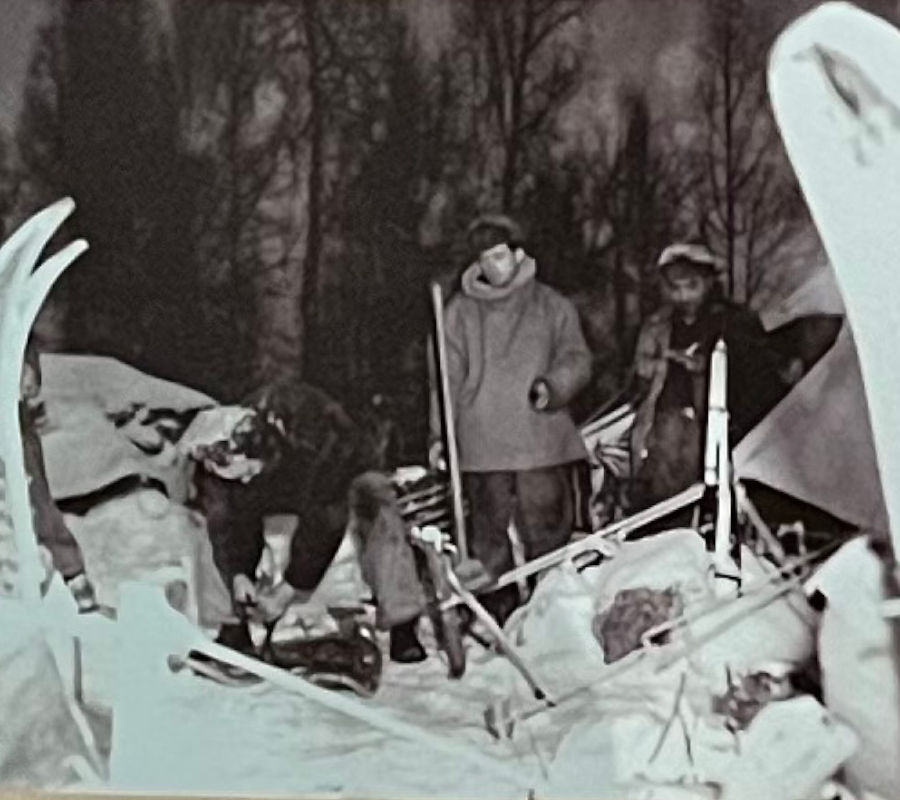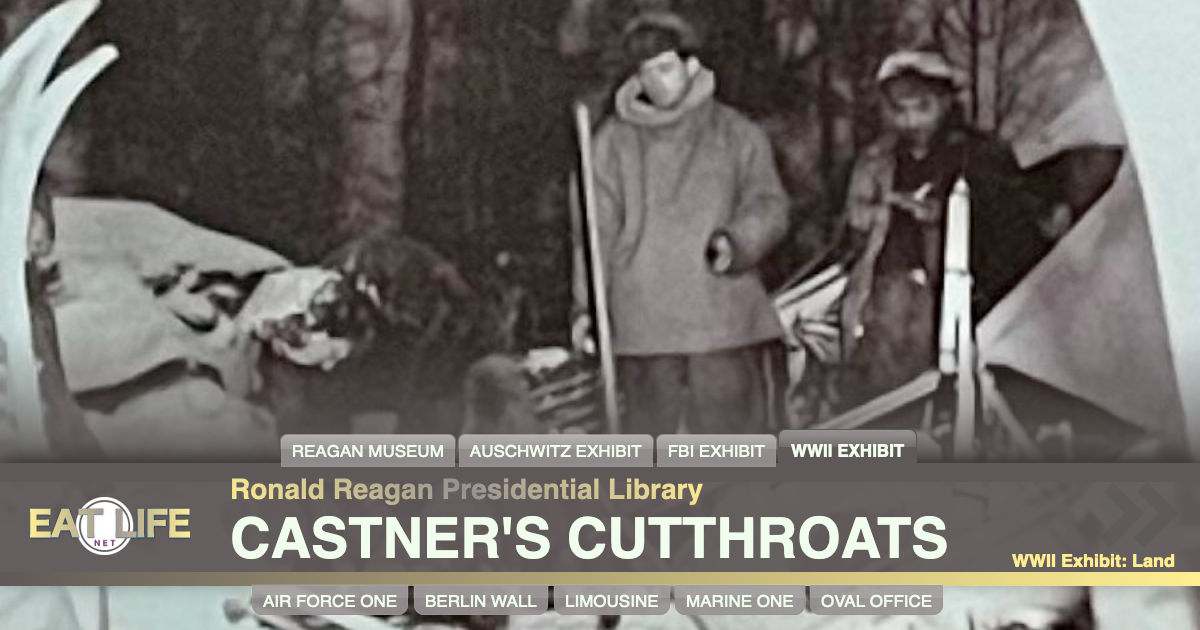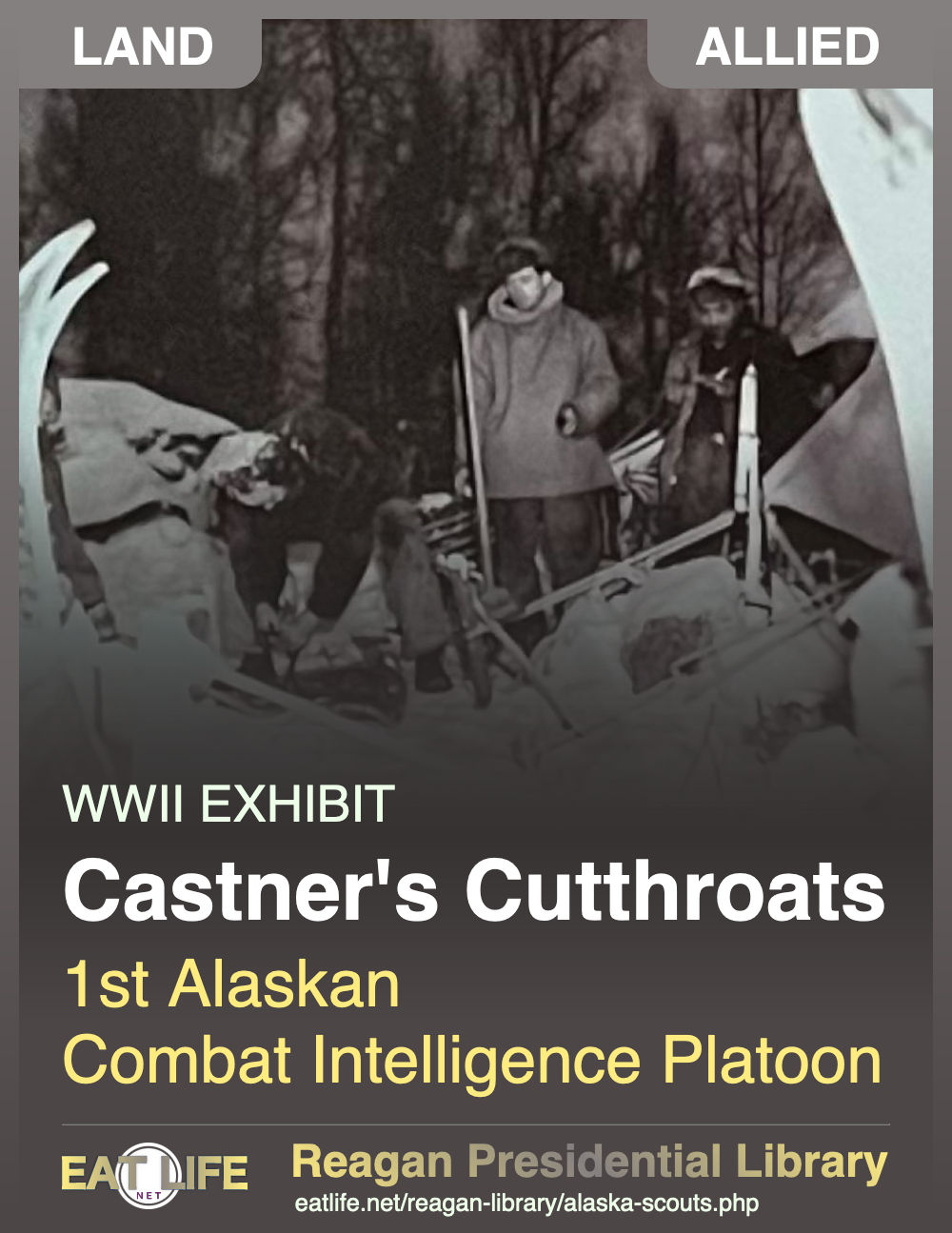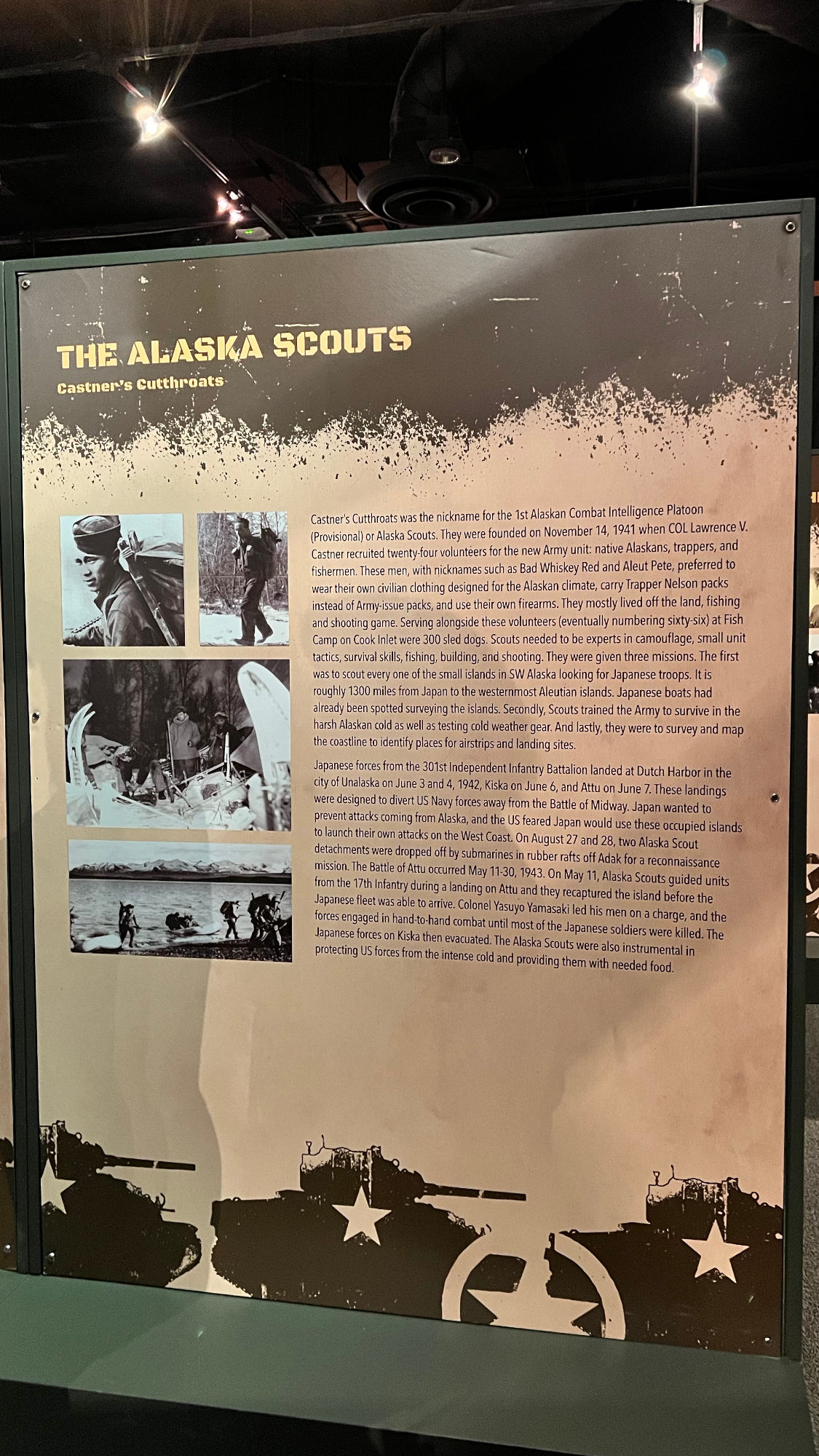
Castner's Cutthroats
Caster's Cutthroats was the nickname for the 1st Alaskan Combat Intelligence Platoon (Provisional) or Alaska Scouts. They were founded on November 14, 1941 when COL Lawrence V. Caster recruited twenty four volunteers for the new Army unit: native Alaskans, trappers, and fishermen.
These men, with nicknames such as Bad Whiskey Red and Aleut Pete, preferred to wear their own civilian clothing designed for the Alaskan climate, carry Trapper Nelson packs instead of Army-issue packs, and use their own firearms. They mostly lived off the land, fishing and shooting game. Serving alongside these volunteers (eventually numbering sixty six) at Fish Camp on Cook Inlet were 300 sled dogs. Scouts needed to be experts in camouflage, small unit tactics, survival skills, fishing, building, and shooting.
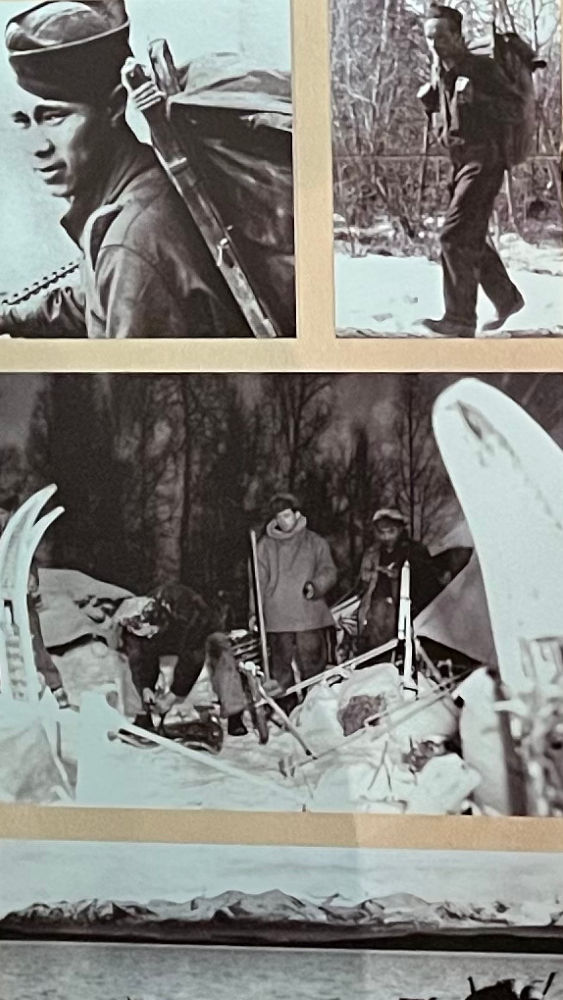 They were given three missions.
The first was to scout every one of the small islands in SW Alaska looking for Japanese troops.
It is roughly 1300 miles from Japan to the westernmost Aleutian islands.
Japanese boats had already been spotted surveying the islands.
Secondly, Scouts trained the Army to survive in the harsh Alaskan cold as well as testing cold weather gear.
And lastly, they were to survey and map the coastline to identify places for airstrips and landing sites.
They were given three missions.
The first was to scout every one of the small islands in SW Alaska looking for Japanese troops.
It is roughly 1300 miles from Japan to the westernmost Aleutian islands.
Japanese boats had already been spotted surveying the islands.
Secondly, Scouts trained the Army to survive in the harsh Alaskan cold as well as testing cold weather gear.
And lastly, they were to survey and map the coastline to identify places for airstrips and landing sites.
Japanese forces from the 301st Independent Infantry Battalion landed at Dutch Harbor in the city of Unalaska on June 3 and 4, 1942, Kiska on June 6, and Attu on June 7. These landings were designed to divert US Navy forces away from the Battle of Midway. Japan wanted to prevent attacks coming from Alaska, and the US feared Japan would use these occupied islands to launch their own attacks on the West Coast.
On August 27 and 28, two Alaska Scout detachments were dropped off by submarines in rubber rafts off Adak for a reconnaissance mission. The Battle of Attu occurred May 11-30, 1943. On May 11, Alaska Scouts guided units from the 17th Infantry during a landing on Attu and they recaptured the island before the Japanese fleet was able to arrive. Colonel Yasuyo Yamasaki led his men on a charge, and the forces engaged in hand-to-hand combat until most of the Japanese soldiers were killed. The Japanese forces on Kiska then evacuated. The Alaska Scouts were also instrumental in protecting US forces from the intense cold and providing them with needed food.
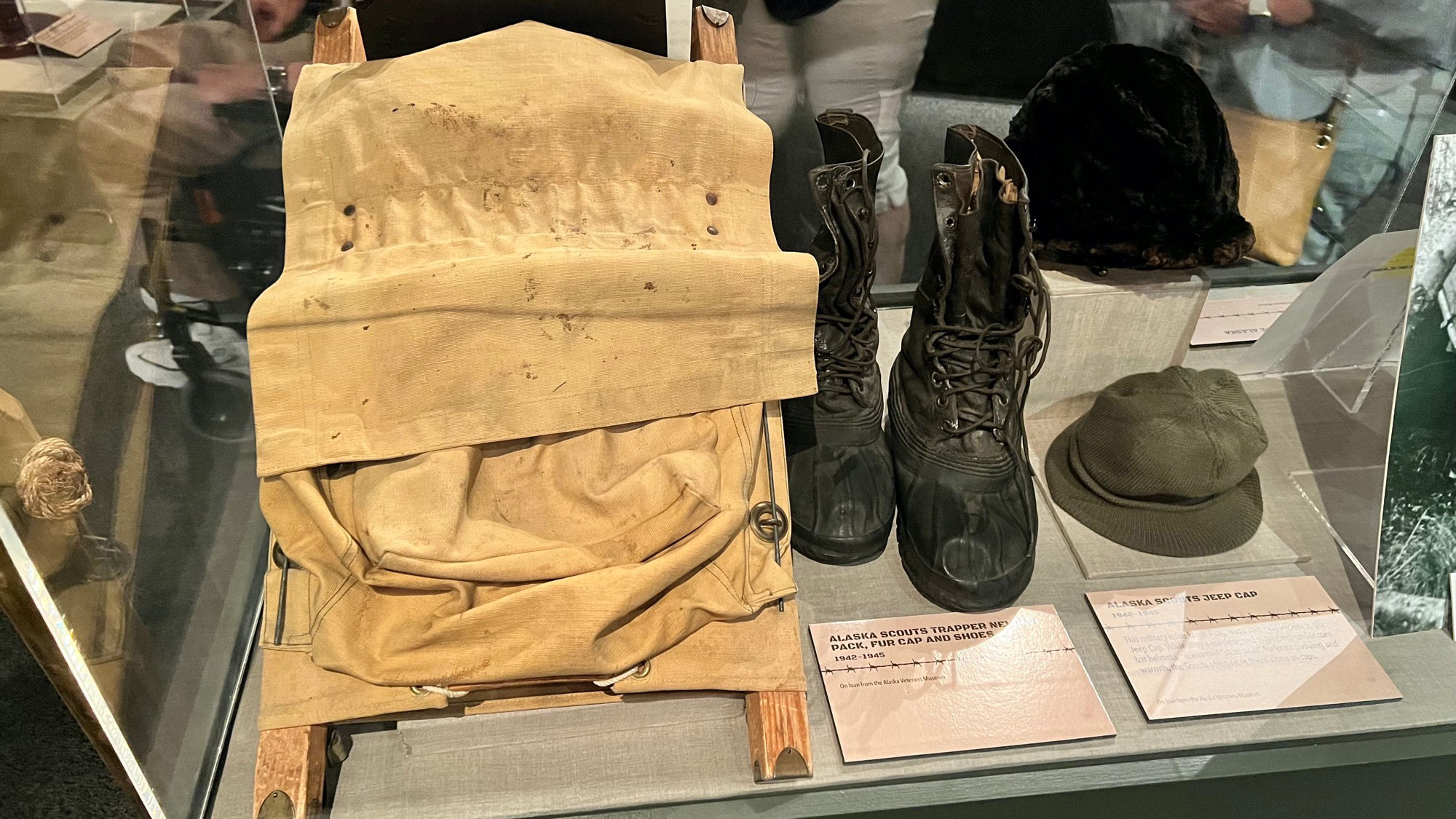
- Trapper Nelson Pack
- Shoes
- Fur Cap
- Jeep Cap - This military issue knitted cap was commonly known as the Jeep Cap.
While they were designed to be worn under combat helmets, nicknamed "steel pots", for extra padding and warmth, the Scouts often wore them alone as caps.
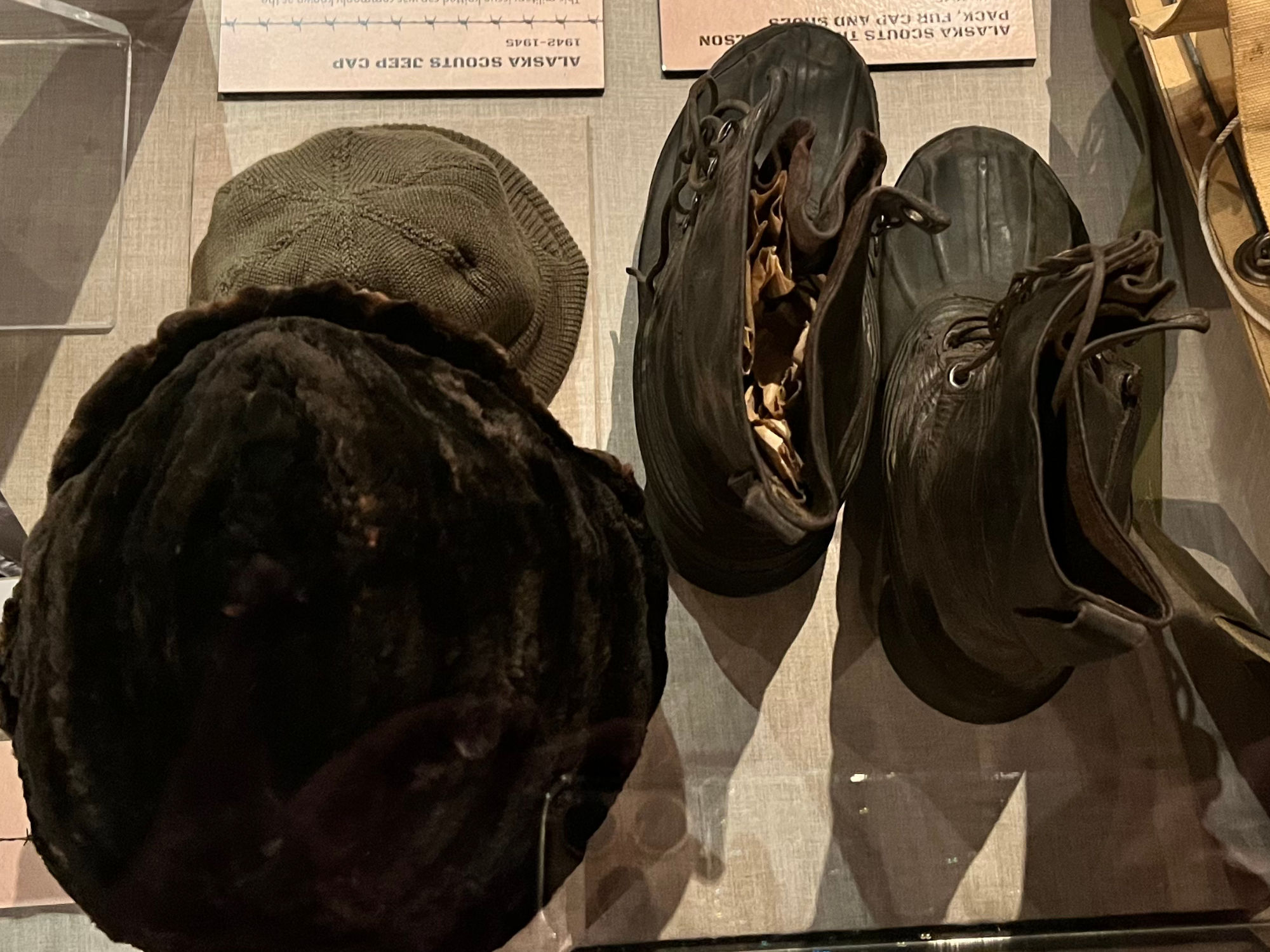
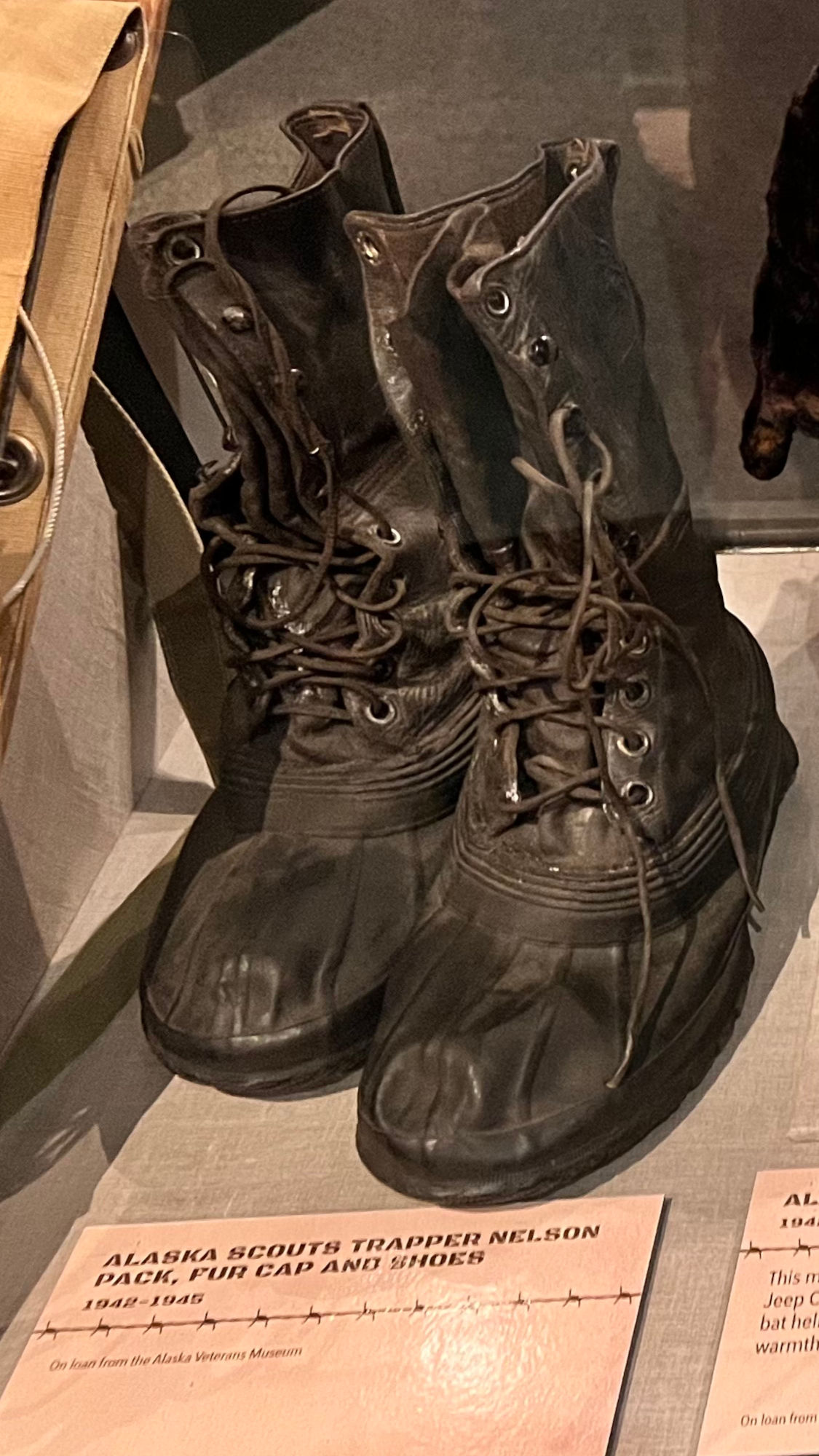
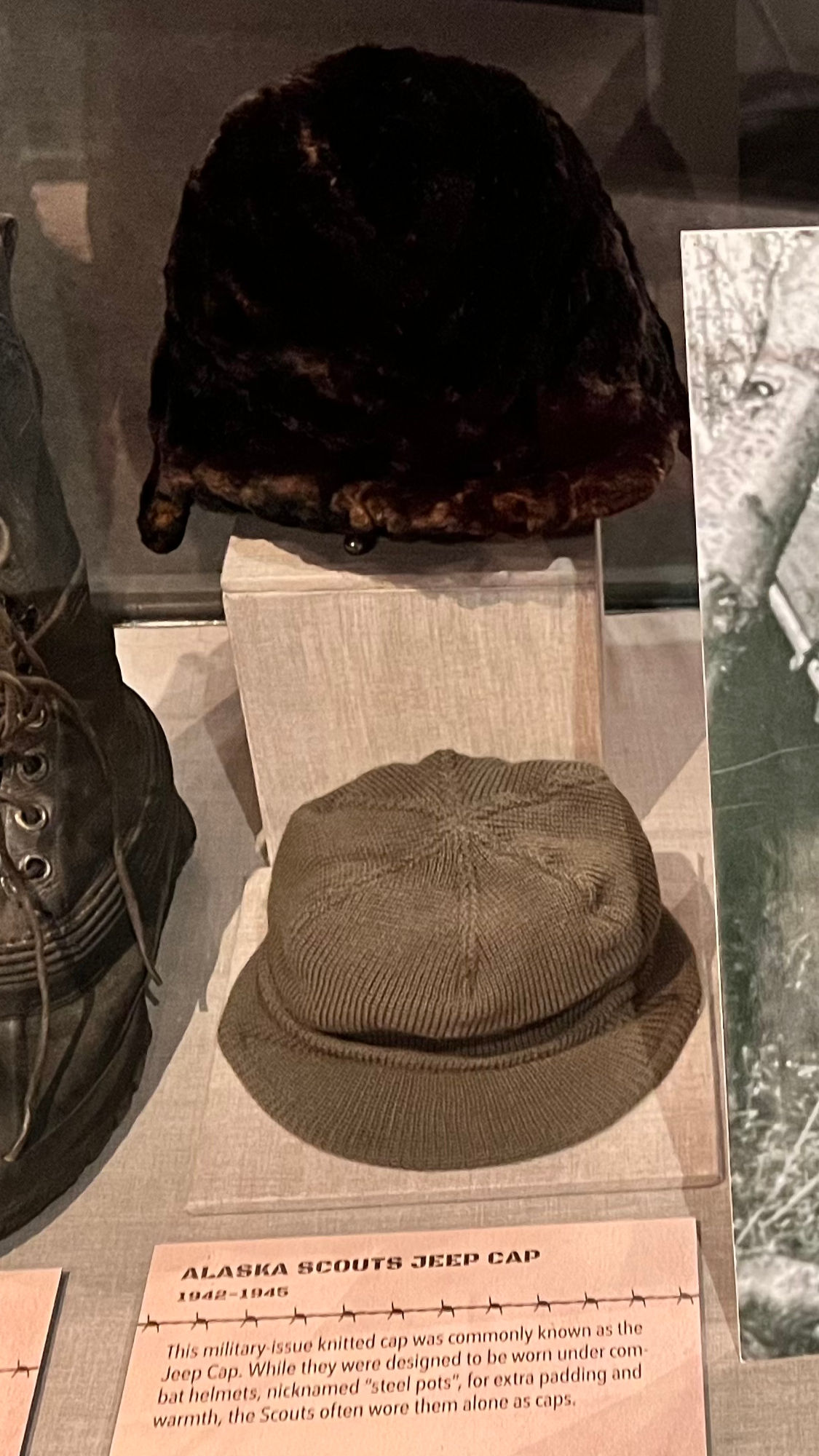
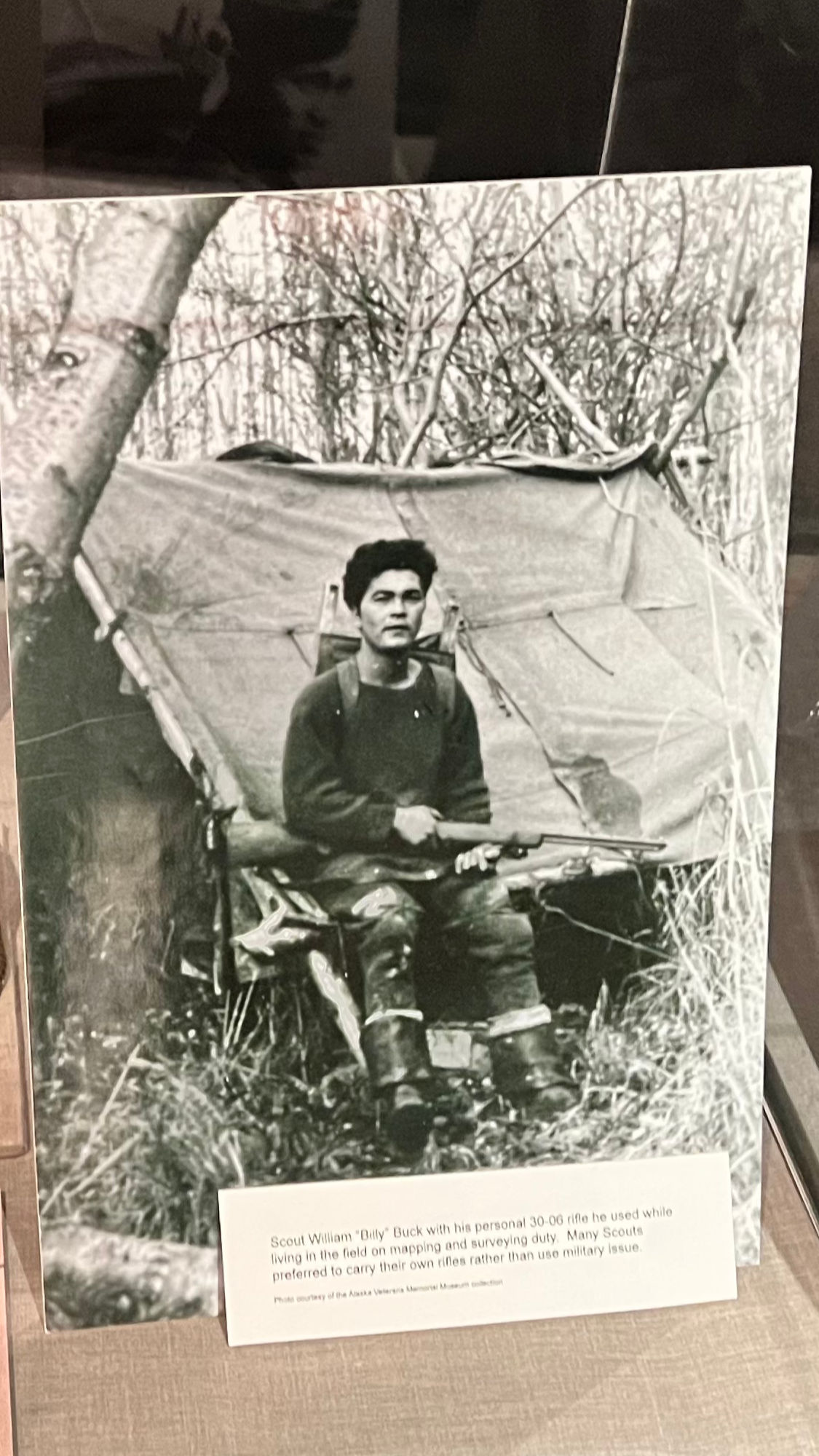
With his personal 30-06 rifle he used while living in the field on mapping and surveying duty. Many Scouts preferred to carry their own rifles rather than use military issue.
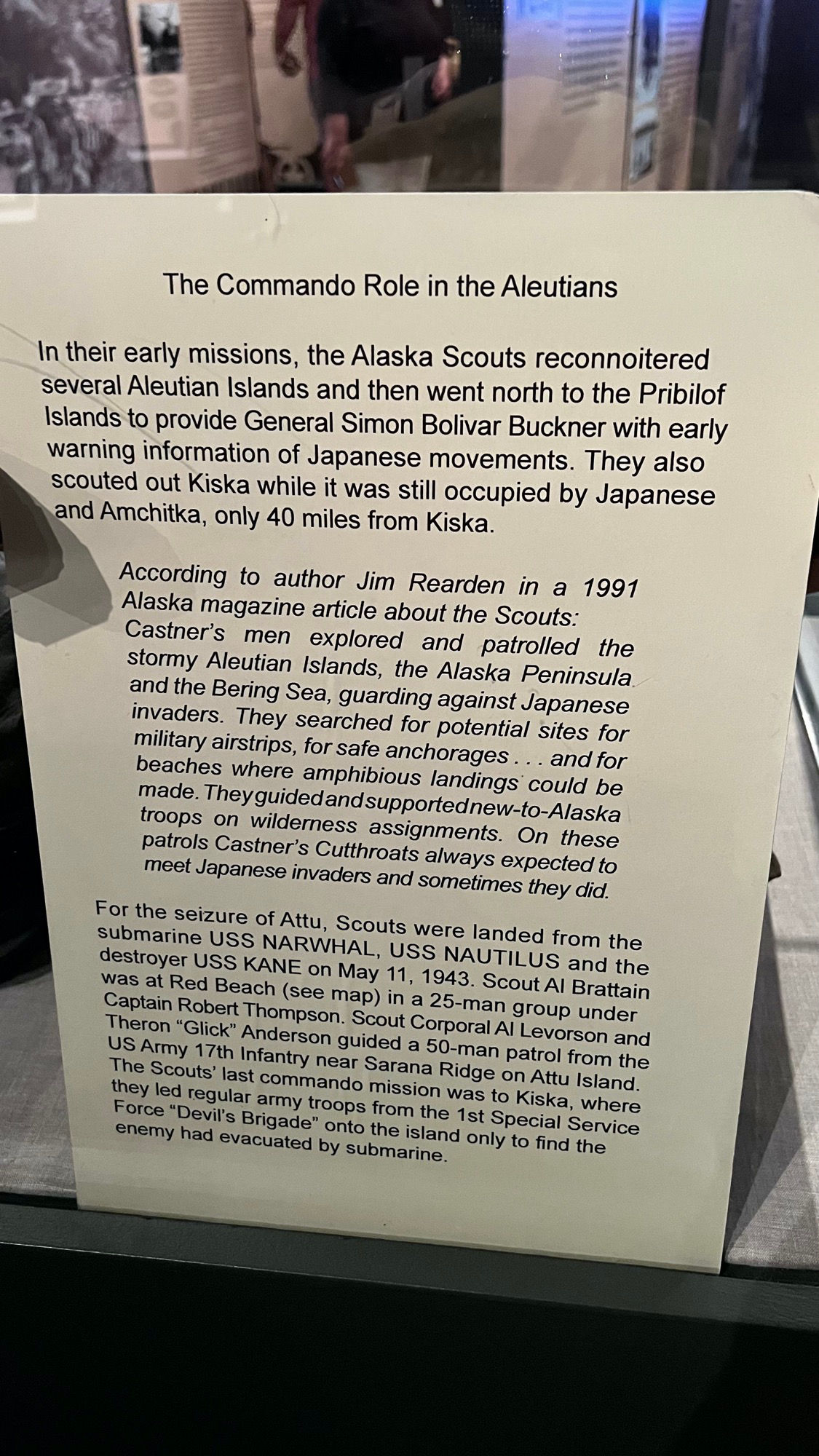
In their early missions, the Alaska Scouts reconnoitered several Aleutian Islands and then went north to the Pribilof Islands to provide General Simon Bolivar Buckner with early warning information of Japanese movements. They also scouted out Kiska while it was still occupied by Japanese and Amchitka, only 40 miles from Kiska.
According to author Jim Rearden in a 1991 Alaska magazine article about the Scouts:
Caster's men explored and patrolled the stormy Aleutian Islands, the Alaska Peninsula, and the Bering Sea, guarding against Japanese invaders. They searched for potential sites for military airstrips, for safe anchorages ... and for beaches where amphibious landings could be made. They guided and supported new-to-Alaska troops on wilderness assignments. On these patrols Caster's Cutthroats always expected to meet Japanese invaders and sometimes they did.
For the seizure of Attu, Scouts were landed from the submarine USS NARWHAL, USS NAUTILUS and the destroyer USS KANE on May 11, 1943. Scout Al Brattain was at Red Beach (see map) in a 25-man group under Captain Robert Thompson. Scout Corporal Al Levorson and Theron "Glick' Anderson guided a 50-man patrol from the US Army 17th Infantry near Sarana Ridge on Attu Island. The Scouts' last commando mission was to Kiska, where they led regular army troops from the 1st Special Service Force "Devil's Brigade" onto the island only to find the enemy had evacuated by submarine.
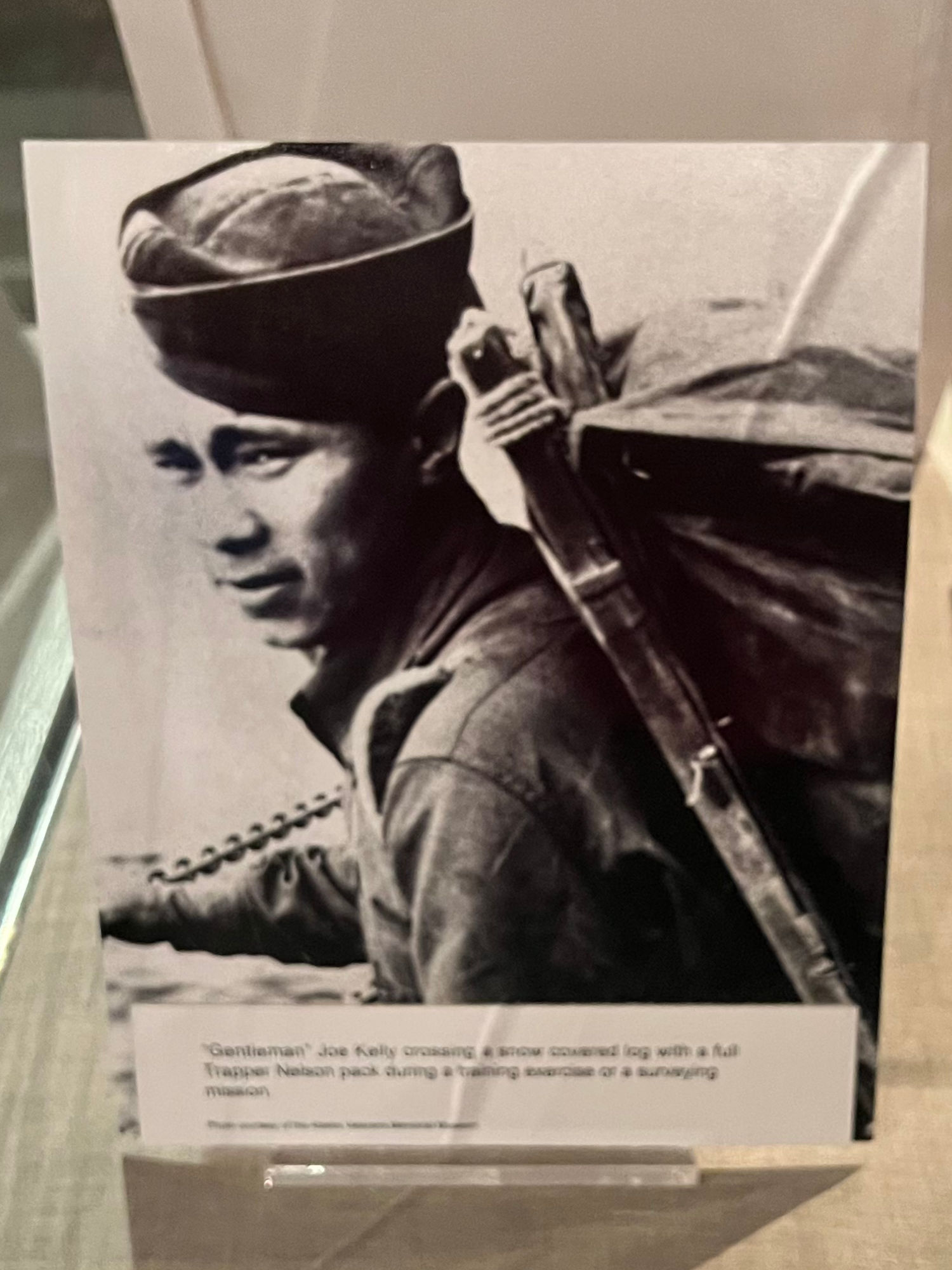
WIKIPEDIA1st Alaskan Combat Intelligence Platoon
Castner's Cutthroats was the unofficial name for the 1st Alaskan Combat Intelligence Platoon (Provisional), also known as Alaskan Scouts. Castner's Cutthroats fought during World War II and were instrumental in defeating the Japanese during the Aleutian Islands Campaign. The unit was composed of just sixty-five men selected to perform reconnaissance missions in the Aleutian Islands during the war.The brainchild of Colonel Lawrence Varsi Castner (1902–49), an Army intelligence officer serving in General Simon Bolivar Buckner's Alaskan Defense Command, the band was organized in order to create a unit that was fully functional with only minimal outfitting. Castner chose men skilled at flourishing in the tough conditions of the Alaskan wilderness including the native Aleuts and Eskimos, sourdough prospectors, hunters, trappers and fishermen. Their background in survival and hunting made them ideal scouts. Appreciating their unique talents, Col. Castner did not enforce standard military procedures on his unit. They were given a great deal of freedom in order to get the job done. The name "Castner's Cutthroats" was given by the military press during the war, but the name preferred by the men was Alaska Scouts.
Castner's Cutthroats were selected to head reconnaissance missions and helped plan landing zones for amphibious assaults on the Japanese-held occupied islands. During the American counterattack, Castner's Cutthroats main mission was to serve as guides and messengers for the U.S. Army. However, when battle preparations were being made to invade Attu and Kiska, they warned the Army that wheeled vehicles would not function on the permafrost and the soldiers would need to be outfitted with warm gear and plenty of food, a warning that was largely ignored. Consequently, many soldiers owed their lives to Castner's Cutthroats for protecting them from the weather and providing them with food.
One of the major successes of Castner's Cutthroats was the building of an airfield on Adak Island. The U.S. Army Air Forces had lost several planes, not to the Japanese, but to Alaskan weather. In order to shorten the distance between the Japanese and American air bases, an airfield on Adak Island was proposed and Castner's Cutthroats were sent in to scout for a suitable location. Due to the mountainous terrain of the area, no acceptable site was available. Instead, Castner's Cutthroats dammed a lagoon and drained it to use the sandy bottom floor as a temporary landing strip. Engineers later came in and improved the area.
